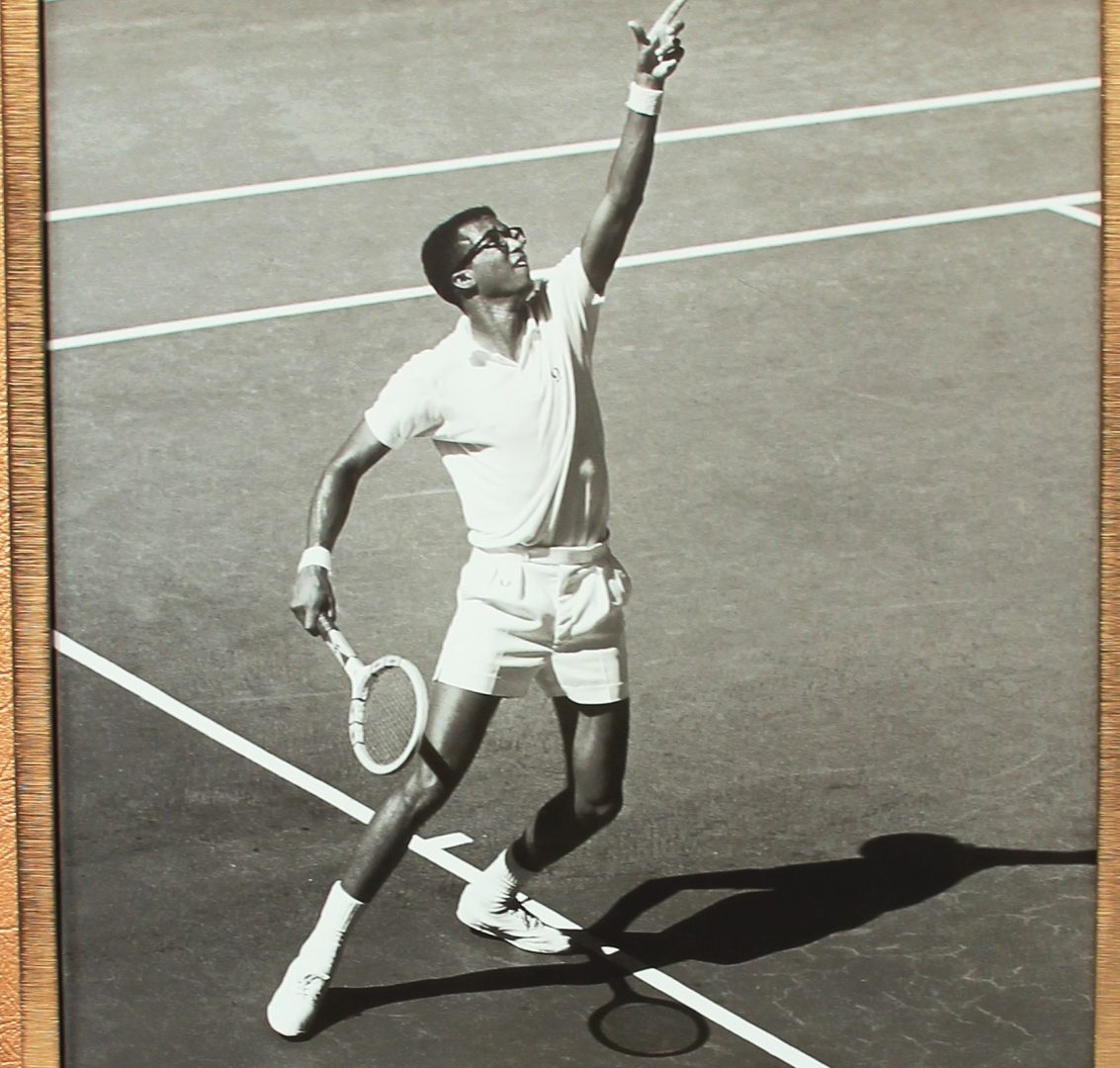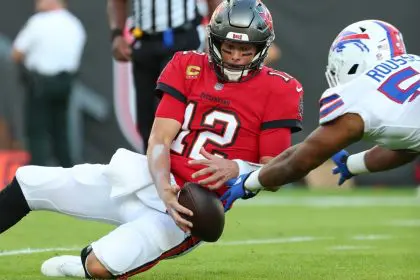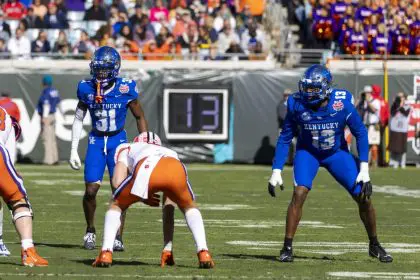Fifty years ago, Arthur Ashe accomplished something that seemed almost impossible at the time and remains unmatched to this day – becoming the first and only Black male tennis player to win the Wimbledon singles championship. His stunning upset victory over Jimmy Connors on July 5, 1975, didn’t just deliver a tennis title; it shattered barriers and created a moment that continues inspiring athletes across all sports.
This wasn’t just another tennis match – it was a cultural earthquake that proved talent and determination could overcome any obstacle, including the stuffy, exclusive atmosphere of tennis’s most prestigious tournament. When Ashe raised his fist in victory on Centre Court, he created an image that remains seared into tennis history as a symbol of breakthrough achievement.
The impossible odds that made victory even sweeter
Ashe entered that Wimbledon final facing challenges that would have broken most competitors. At nearly 32 years old, he was considered past his prime and seeded sixth in the tournament. Meanwhile, 22-year-old Jimmy Connors held the number one ranking and had dominated tennis by winning three Grand Slams the previous year and nine titles in 1975.
The personal animosity between the players added another layer of pressure that most athletes never experience. Connors had filed a multimillion-dollar lawsuit against Ashe, claiming defamation over public criticism about Connors’s decision to skip Davis Cup competition for World Team Tennis.
Perhaps most intimidatingly, Ashe had never beaten Connors in three previous meetings, and the defending champion entered the final without dropping a single set throughout the entire tournament. When you’re facing the world’s best player who’s playing perfect tennis while also suing you for millions of dollars, the mental challenges become almost insurmountable.
The strategic masterpiece that confused a champion
Ashe’s path to victory required more than just tennis skills – it demanded tactical brilliance that completely neutralized Connors’s overwhelming power and aggression. Drawing inspiration from Muhammad Ali’s “rope-a-dope” strategy that had shocked George Foreman just a year earlier, Ashe chose finesse over force.
Instead of trying to match Connors’s explosive style, Ashe implemented a game plan based on soft shots, tricky spins, and precise placement that disrupted his opponent’s rhythm completely. The strategy of using chips, lobs, and slicing shots turned Connors’s greatest strengths against him.
Ashe even delivered a psychological blow before the match began by wearing a Davis Cup jacket with “USA” prominently displayed – a pointed reminder of their legal dispute over patriotic duty. When mental warfare combines with tactical genius, it creates the foundation for historic upsets.
The match that unfolded like a perfect script
The first two sets demonstrated just how perfectly Ashe’s strategy worked against the previously unbeatable Connors. Breaking serve three consecutive times in the first set, Ashe dominated 6-1 while completely controlling the pace and flow of points.
The second set brought more of the same tactical brilliance, with Ashe’s lobs and backhand passing shots continuing to frustrate the world number one. Another 6-1 victory gave Ashe a commanding two-set lead that seemed to guarantee victory.
But champions don’t surrender easily, and Connors proved his mental toughness by adjusting his strategy and winning the third set 7-5. This comeback created exactly the kind of pressure situation that separates legends from good players – would Ashe maintain his composure or crumble under the weight of expectations?
The fourth set drama that created tennis immortality
When Connors took a 3-0 lead in the decisive fourth set, it appeared the momentum had completely shifted toward the defending champion. Most players would have panicked facing that deficit against the world’s best player, but Ashe demonstrated the champion’s mentality that had carried him through nine previous Wimbledon appearances.
The veteran’s experience and tactical discipline allowed him to break back twice and ultimately claim the set 6-4, completing one of tennis’s greatest upsets. That final point, followed by Ashe’s triumphant fist pump, created an image that transcends sports and represents breakthrough achievement in any field.
Remarkably, Connors withdrew his multimillion-dollar lawsuit shortly after the final, suggesting that Ashe’s on-court victory had resolved their personal dispute as definitively as any legal proceeding could have.
The cultural impact that extended far beyond tennis
Ashe’s Wimbledon triumph occurred during an era when tennis remained largely associated with country club exclusivity and white privilege. His victory at the sport’s most prestigious venue sent a powerful message that excellence could emerge from any background and compete at any level.
The immediate impact was measurable – membership in the American Tennis Association, the oldest African American sports organization, increased significantly following Ashe’s victory. Young Black athletes suddenly saw tennis as a viable path to success and recognition.
John Lucas, who was completing his junior year at Maryland in 1975, witnessed firsthand how Ashe’s victory inspired an entire generation of athletes. The sight of a Black champion raising the Wimbledon trophy created possibilities that many young people had never imagined before.
The lasting legacy that continues inspiring today
Fifty years later, Ashe remains the only Black male player to win a Wimbledon singles title, making his achievement even more remarkable in retrospect. While MaliVai Washington reached the 1996 final, no other Black male player has come as close to matching Ashe’s historic accomplishment.
Current players like Francis Tiafoe, Darwin Blanch, and Ben Shelton represent hope for ending this drought, but their ongoing efforts only emphasize how difficult Ashe’s achievement really was. Winning Wimbledon requires not just talent but also the mental strength to perform under unprecedented pressure.
James Blake, who reached the third round twice at Wimbledon, acknowledges both the inspiration and burden that Ashe’s legacy creates for Black tennis players. Every match becomes an opportunity to honor that pioneering achievement while trying to add new chapters to the story.
The defining moment that transcends sports
The grainy footage of Ashe’s match point victory and subsequent celebration remains one of sports’ most powerful images because it represents more than tennis excellence. That moment captures the triumph of perseverance over prejudice, strategy over power, and determination over seemingly impossible odds.
Modern tennis fans can watch those old clips and understand why Ashe’s victory resonates far beyond the tennis world. When barriers fall at venues like Wimbledon, it sends messages about possibility and achievement that inspire athletes across all sports and all backgrounds.
Arthur Ashe’s 1975 Wimbledon victory stands as proof that historic achievements require more than just talent – they demand the courage to compete against overwhelming odds while carrying the hopes and dreams of entire communities. Fifty years later, that courage continues inspiring athletes who understand that some victories matter far more than any trophy or prize money could ever represent.















